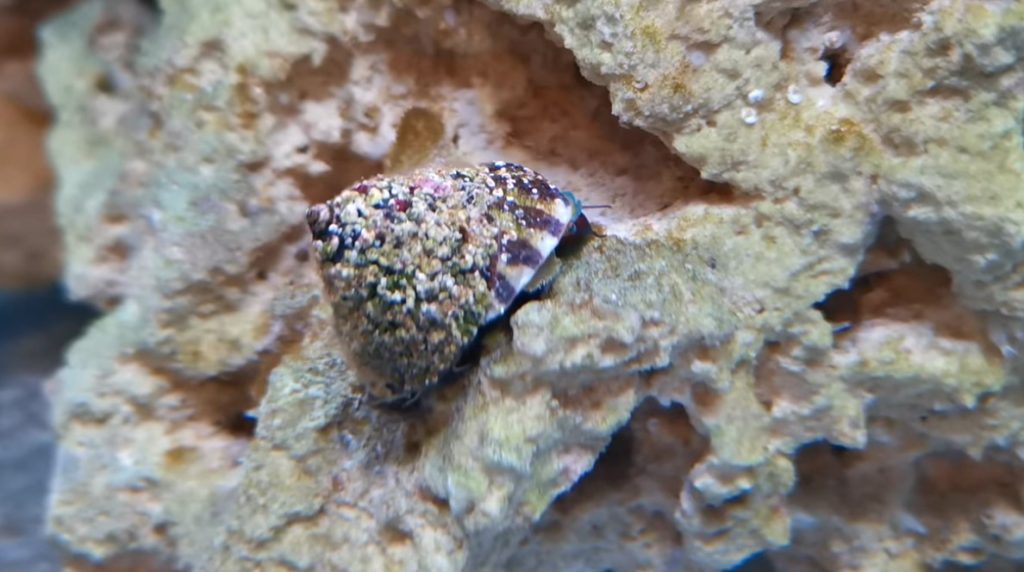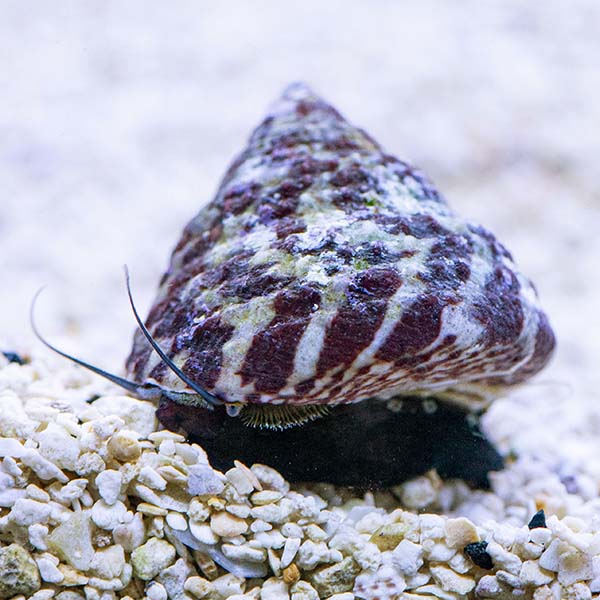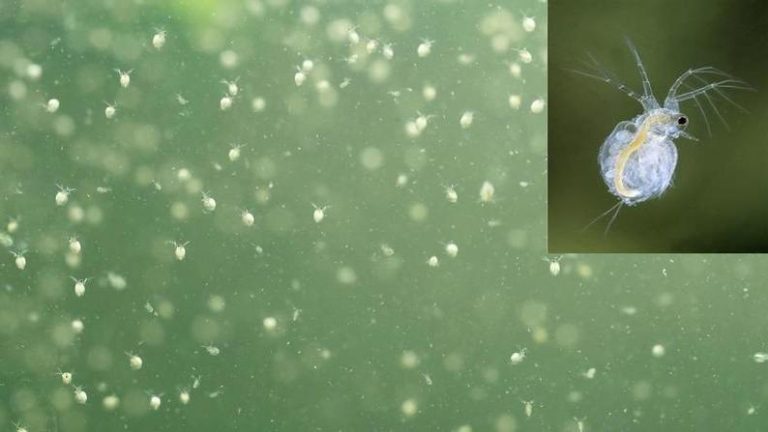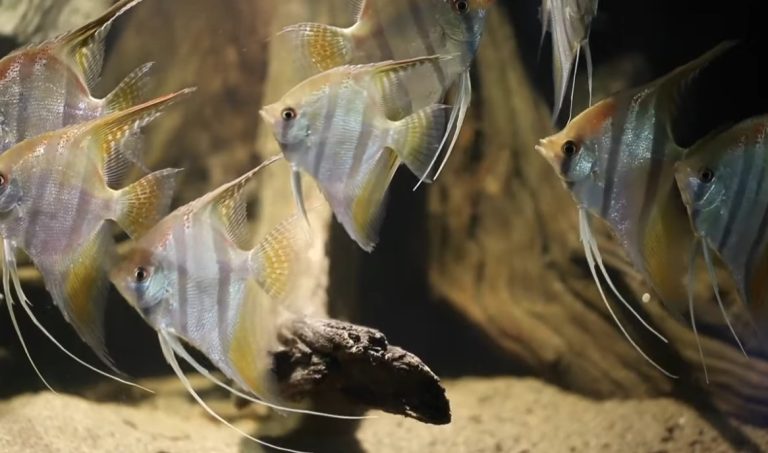Banded Trochus Snail
The Banded Trochus Snail: An Essential Addition to Your Aquarium
Are you looking to enhance the beauty and health of your aquarium? Look no further than the banded trochus snail! These small, yet fascinating creatures can make a world of difference in the ecosystem of your tank. In this article, we will delve into the various aspects of the banded trochus snail, from its appearance and behavior to its role in maintaining a clean and balanced aquarium. So, let’s dive right in!
Appearance and Behavior
The banded trochus snail, also known by its scientific name Turbo fluctuosa, is a marine gastropod mollusk that belongs to the Trochidae family. This species is widely recognized for its striking appearance, with a conical shell characterized by alternating bands of brown and cream color. Its shell can grow to be about an inch in length, making it a compact addition to your aquarium.
In terms of behavior, the banded trochus snail is a peaceful creature that spends most of its time grazing on algae. It possesses a muscular foot that is equipped with a rasp-like mouth, enabling it to scrape off algae from various surfaces in your tank. This voracious appetite for algae makes the banded trochus snail a valuable asset for maintaining a clean and algae-free aquarium.

Tank Requirements and Compatibility
To ensure the well-being of your banded trochus snail, it is important to create an environment that mimics its natural habitat. This includes providing a well-established aquarium with ample hiding spaces such as rocks and crevices. It is also crucial to maintain optimal water parameters, including a temperature range of 72-78°F (22-26°C), pH level between 8.1-8.4, and a salinity level of 1.023-1.025.
One of the great advantages of keeping banded trochus snails is their compatibility with a wide range of tank mates. They are peaceful creatures that coexist well with other peaceful fish species, such as clownfish, gobies, and certain types of wrasses. However, it’s important to avoid aggressive tank mates that may harm or prey on these snails.
Algae Control and Maintenance
As mentioned earlier, algae control is one of the primary benefits of keeping banded trochus snails in your aquarium. These snails have a seemingly insatiable appetite for algae, and they will eagerly graze on different surfaces to keep the algae growth in check. This provides a natural and effective means of maintaining a clean and visually appealing tank.
In addition to their algae-eating capabilities, banded trochus snails also play a crucial role in maintaining the overall health of your aquarium. They are known to stir up sand beds as they move around, thereby preventing the formation of anaerobic pockets and encouraging the growth of beneficial bacteria. This helps to maintain proper water circulation and prevents the accumulation of harmful substances.
Reproduction and Lifespan
Banded trochus snails are known to reproduce in captivity, although it may not be as frequent as in their natural habitats. The process begins with the adult snails releasing eggs, which are typically laid in crevices or under rocks. These eggs hatch into tiny larvae that go through a planktonic phase before settling in the substrate as juvenile snails.
In terms of lifespan, banded trochus snails can live for several years if provided with the appropriate care. With a balanced diet and suitable tank conditions, they can thrive and continue to contribute to the health and beauty of your aquarium for a significant period.
Frequently Asked Questions
1. Can banded trochus snails survive in a freshwater aquarium?
No, banded trochus snails are marine species and require a saltwater environment to survive.
2. How many banded trochus snails should I keep in my aquarium?
The number of banded trochus snails you should keep depends on the size of your tank and the level of algae growth. As a general guideline, you can start with one snail per five gallons of water and adjust accordingly based on your specific circumstances.
3. Are banded trochus snails prone to any diseases?
Banded trochus snails are generally hardy and resistant to diseases. However, it is important to quarantine any new additions to your tank to prevent the introduction of potential pathogens.
4. How do I feed my banded trochus snails if the algae in my tank is limited?
If there is a scarcity of algae in your tank, you can supplement your banded trochus snails’ diet with algae wafers or other forms of marine vegetation. Be sure to monitor their intake and avoid overfeeding.
5. Can banded trochus snails harm other inhabitants of my tank?
No, banded trochus snails are peaceful creatures and do not pose a threat to other tank mates. However, they may be vulnerable to predation by certain aggressive fish species.
Final Thoughts
The addition of banded trochus snails to your aquarium can bring about numerous benefits, including efficient algae control and a healthier tank environment. These small yet hardworking snails can make a noticeable difference in the overall aesthetic appeal and water quality of your aquarium. By providing them with suitable tank conditions and proper care, you can enjoy their beauty and usefulness for years to come. So, why not introduce these wonderful creatures to your aquarium and experience the wonders they can bring?






